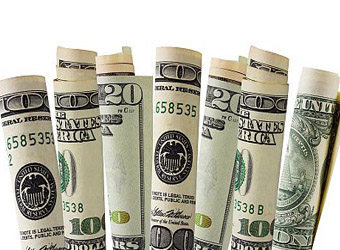The dollar languished near a three-month low versus a basket of major currencies on Tuesday as markets reopened at the start of 2018, while Asian currencies such as the Chinese yuan began the year on a high note.
The dollar’s index against a basket of six major currencies stood at 92.162. On Friday it had slipped to as low as 92.080, the weakest level since September 22.
For the whole of 2017, the dollar index slid more than 9.8 percent, the greenback’s worst annual performance since 2003.
The dollar retreated in 2017, partly because economic growth picked up outside the United States, with other countries’ central banks moving towards tighter monetary policy, lessening the perceived divergence between the Federal Reserve and others.
The euro edged up 0.1 percent on the day at $1.2018, after having surged 14 percent in 2017 for its best annual performance since 2003.
The euro had risen 1.1 percent in the last week of 2017, bringing it back within sight of a 2-1/2 year peak of $1.2092 set in September.
In addition to political factors such as the Italian election in March, a key factor for the euro in 2018 is how the European Central Bank proceeds with curtailing its massive monetary stimulus.
With the dollar on the defensive, emerging Asian currencies clawed higher.
The Chinese yuan rose to as high as 6.4922 yuan per dollar, its highest level since Sept. 8.
“Highlighting today’s moves is the euro trading above $1.20 and the Chinese yuan dropping below 6.5,” said Satoshi Okagawa, senior global markets analyst at Sumitomo Mitsui Banking Corporation in Singapore.
“There’s across-the-board strength in Asian currencies on the back of such moves,” Okagawa said, adding that a drop in the benchmark U.S. 10-year Treasury yield toward the end of 2017 was helping to weigh on the U.S. dollar.
The greenback’s weak tone helped boost the Singapore dollar, which rose to S$1.3322 per U.S. dollar at one point, its strongest level since June 2016.
In addition, data released on Tuesday showed Singapore’s economic growth slowed in the fourth quarter as factories lost steam, but a services sector recovery helped underscore expectations that the city-state’s central bank could tighten its exchange-rate based monetary policy as early as April.
Bitcoin, the biggest and best-known digital currency, fell 2.0 percent to around $13,175 on the Luxembourg-based Bitstamp exchange.
Bitcoin had soared in 2017, gaining more than 1,300 percent for the year.


